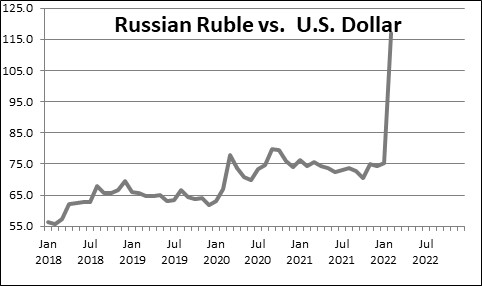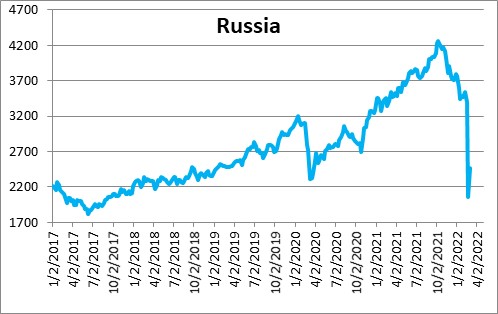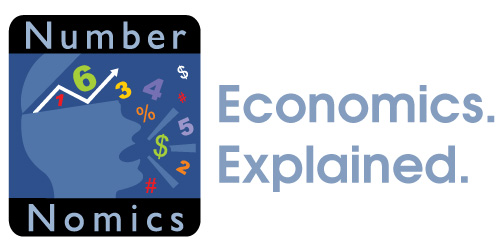March 4, 2022
The Russian economy is a fraction the size of the U.S. economy and an even smaller percentage if one adds in the GDP of its NATO allies. The imposed sanctions combined with an impressive unwillingness by private sector firms around the globe to do business with Russia have, for all practical purposes, shut down Russia’s economy. But none of that matters. Putin continues to destroy Ukraine and has no intention of backing away. He is there. He is staying. And he has nuclear weapons. While the allies could further undermine the Russian economy by cutting off Russia’s ability to sell its oil, they are reluctant to do so because that action would undoubtedly escalate the conflict. When your enemy has nuclear weapons such fears are legitimate. If the goal is to undermine the Russian economy and constrain Putin’s ability to fight future wars, that objective can be attained. But if the goal is to punish Putin for destroying Ukraine and force Russian forces to withdraw, that objective is unlikely to be attained in the absence of military action. Thus, Putin appears to have achieved his goal of controlling Ukraine. While he is paying an enormous price at home he does not seem to care. How will all this end? We do not know. Perhaps the situation at home will become so bleak that the wealthy Russian businessmen supporting Putin withdraw their support. Or perhaps Russia’s military leaders conclude that he is unstable and turn against him. Our guess is that the solution to this situation will probably be resolved by the people of Russia rather than action by western countries designed to stop him. What is clear is that the risks of a bad outcome have increased and there will be no quick solution.
GDP in the United States is almost $23 trillion. Russia’s economy is the 11th largest in the world with GDP of $1.6 trillion. Per capita income in the U.S. is $69,400. In Russia it is $11,300. Russia is, therefore, a moderate-sized, relatively poor country.
| Ranking | GDP | Population | Per Capita Income | |
| (Trillions) | (Millions) | $ | ||
| 1 | U.S. | $22.94 | 333 | $69,375 |
| 2 | China | $16.86 | 1,413 | $11,891 |
| 3 | Japan | $5.10 | 125 | $40,704 |
| 4 | Germany | $4.23 | 83 | $50,788 |
| 5 | U.K. | $3.11 | 67 | $46,200 |
| 6 | India | $2.95 | 1,389 | $2,116 |
| 7 | France | $2.94 | 68 | $45,028 |
| 8 | Italy | $2.12 | 59 | $35,585 |
| 9 | Canada | $2.02 | 39 | $52,791 |
| 10 | S. Korea | $1.82 | 52 | $35,196 |
| 11 | Russia | $1.65 | 145 | $11,273 |
By restricting Russia’s access to the SWIFT network the allies have effectively limited the ability of Russia to attain foreign capital. By freezing the Russian central bank’s assets and the assets of wealthy Russian oligarchs, they can no longer tap their previously accumulated wealth.
This action has crushed the Russian ruble which has fallen in value by more than 50% from 75 rubles to the dollar a couple of weeks ago to 117 per ruble today. That means that imported goods in Russia have just skyrocketed in price.

Firms around the globe have announced that they will no longer do business in Russia. Thus, firms in Russia will have considerable difficulty selling whatever they produce to anyone else in the world. They will have challenges trying to find the materials they need for production.
The Russian stock market has been shut down for a week. Prior to its closing it had fallen 40% from its mid-October peak with most of that drop occurring in the past couple of weeks. A drop of that magnitude will undoubtedly force a number of Russian companies to become insolvent and they will have to close their doors.

With an inability to sell their merchandise many of these firms will need to borrow money to stay afloat. But the Russian central bank just this week raised its key interest rate from 9.5% to 20.0% in an effort to stabilize the ruble.
For an individual Russian citizen they may find themselves unemployed if the firm for which they work has to close. Without a paycheck they will have to draw down their savings.
In short, the Russian economy is in dire straits. Some are projecting a GDP decline this year of 10.0%.
Destroying the Russian economy has been surprisingly swift and easy. But so what? Russia is still in Ukraine and Putin is not leaving. It is just a matter of time before Russian troops are on the borders of NATO allies Estonia, Latia, Lithuania, Poland, Romania, Hungary, and Slovakia. With Putin at the helm the risk of a devastating mistake has increased many fold. What’s next is not clear.
Stephen Slifer
NumberNomics
Charleston, S.C.

Hi Steve – is it true that GS and JPM are buying Russian corporate bonds?
HI Barry. Hope all is well. Been a long time. I keep hearing about such activity but it would not surprise me to learn that is the case. I have no idea if it is accurate. If it is, sounds to me like we need to extend the sanctions to some domestic firms.
Steve
Clear, common-sense analysis as always. Thanks Steve.